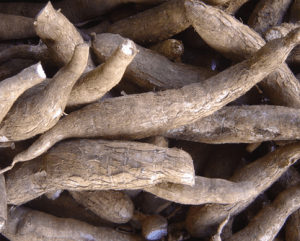Researchers review cassava diseases control project
 Researchers have met in Kumasi to review the first phase of the West African Agricultural Productivity Programme’s (WAAPP) Diffusion of Approaches for the Control of Cassava Diseases (DALIMA) Project.
Researchers have met in Kumasi to review the first phase of the West African Agricultural Productivity Programme’s (WAAPP) Diffusion of Approaches for the Control of Cassava Diseases (DALIMA) Project.
The project being spearheaded by the Crop Research Institute (CRI) of the Council for Scientific and Industrial Research (CSIR), aims at maximizing cassava production, using disease-resistant planting materials.
Research indicates that the sub-region produces about 31 per cent of the world’s cassava, but this is being threatened by viral diseases including the African Cassava Mosaic Virus.
Funded jointly by the United States Agency for International Development (USAID) and WAAPP, the DALIMA Project had since its inception in 2009 helped to cultivate about 40 hectares of disease-resistant cassava planting materials across the West African sub-region.
Dr. Mariam Quain, Country Director of the project, and also Head of the Biotech Laboratory, CRI, said the new materials were being made available to farmers, citing Benin where farmers had already benefited.
The workshop, which had in attendance WAAPP Coordinators drawn from Ghana, Cote d’Ivoire, Togo, Sierra Leone, Benin, Liberia and Nigeria, and, among other things, was strategized to develop a new road map to sustain the project for the next phase.
Dr. Quain indicated that the participants would discuss ways of setting up a regional mission on roots and tubers to help advance research and increasing cassava production to ensure food security.
She stressed the need to deepen collaboration among Agricultural Scientists, Researchers and technocrats to improve the productivity of the cassava value chain in the sub-region.
Professor Abdourahamane Sangare, Biotechnology and Biosafety Programme Manager of the West and Central African Council for Agricultural Research and Development (WECARD), facilitators of the DALIMA Project, affirmed his resolve to spearhead efforts at maximizing roots and tubers production through research.
Source: GNA
